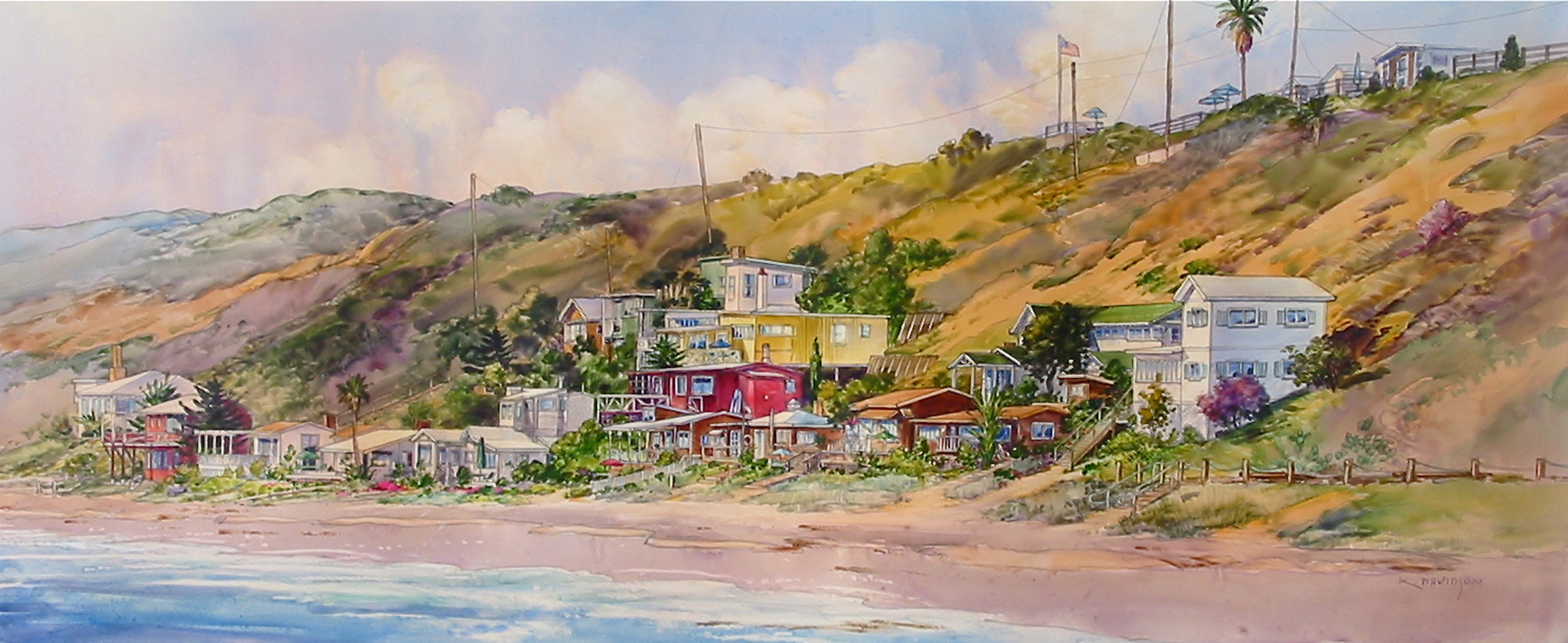One on One with Richard H. Dodd
By Gina Dostler
Richard H. Dodd & Associates specializes in remodels and custom residential architecture. For 54 years, Dodd was located in Newport Beach where he immersed himself in coastal homes. Now based in Tustin, his still designs coastal projects, but confronts new challenges.
Q: How has designing homes changed since you started?
A: The changes I’ve seen as an architect have taken place in the city’s building department, mainly with all the building codes that are required when remodeling or building a home. Everything was just starting back then. I wrote the original height limit calculations for single family homes in Newport Beach so am very familiar with it. It’s only been modified slightly since then. I was working in this city even before there was a Coastal Commission.
Q: What challenges wait for homeowners living on the bay?
A: As the weather continues to warm up due to the climate change, the rising seawater poses challenges to everyone. Currently Newport has set the floor level at a minimum of 9” for any home in a flooding area such as Balboa Island or any bay front home. But the Coastal Commission is considering making it higher. I submitted a proposal for 91/2” floor level for a Balboa Island home I’m designing, which they approved, though not sure if this will be a new requirement. But at this point we are required to have a hazard analysis by a licensed professional with expertise in the coastal process.
Q: What exactly does that mean?
A: We have to hire another engineer that has detailed experience with the rising tides. Right now the Coastal Commission has projected in their 2015 Sea Level Rise Policy Guide that from year 2000 to 2100 the sea level will rise anywhere from 17 to 66 inches. So what the specialized engineer has to do is determine how the sea level rise will affect a particular property in the next 50 years.
Q: Besides bringing the tide level up, how else does rising sea level affect us?
A: The guide informs us that though the California coast regularly experiences erosion, flooding and significant storm events, sea level rise will intensify these natural forces, leading to significant social, environmental and economic impacts. And by not preparing properly for these changes could cost everyone much more in the long run.
Q: Does the city have solutions?
A: Right now if the first floor level is not 9”, some sort of dam must be provided around the entire structure, which has been generally accepted to be a concrete curb. For the doors in the entry, sand bags need to be used. The city might adopt certain strategies to take care of the sea level rises such as raising the bulkheads (the concrete walls) that protects the interior from the high tides. It’s very likely this will be one of the strategies. And if they do that, it obviates some of the needs of the Coastal Commission’s hazard analysis. Sooner or later Newport will have to address this type of issue.
Q: What are the challenges of constructing a home by the sea?
A: Of course finding ways to keep the water out such as rising tides. At the same time, soil liquefaction of the site poses the challenge of de-watering. At the low-lying areas around the bay, the soil at some depth is saturated with water, somewhere between 4 to 5 feet. It varies in depth, but those figures are quite common. In case of an earthquake, because of its water saturation, the soil moves and bends so you have to have a structural engineer design the footing or slab that will take the liquefaction forces in consideration if an earthquake were to occur. The de-watering aspect is a challenge along with other geological issues.
Q: How do you handle the liquefaction forces?
A: It happened on a Harbor Island home where we put in a basement below sea level. The slab sitting below sea level had to be 4 ½ inches thick in order to keep it from floating up like a boat. To dig out the basement, so water didn’t keep running into the excavation, we used pumps full time pumping the water back out into the bay. This required a huge tank that filters out debris so unhealthy stuff didn’t end up in the ocean. And we had to have a stand-by generator in case of a power shortage. Yet it is not always about the water. A China Cove home we built on a cliff, the rock was so hard we could not dig the foundation through conventional means. Not even with a jack hammer. This rock is four to five times harder than concrete. We had to use mining drills and drill holes in the rock, put rebar and pour the foundation up and over the rock.
Q: Other instances?
A: The China Cove home is located over the water with a concrete column holding up the house. It was built just months before the Coastal Commission addressed this type of issue. Due to bluff set-back, houses cannot jet out over the bluff anymore. It certainly would be questionable if the commission would allow it. They are worried about erosion factor. If there is a lot of weight on the bluff and it gets saturated with water, the weight of the house can degrade the bluff. This usually happens only when you have unfavorable geological conditions.
Q: Do you have some solutions to protect homes from rising seawater?
A: Right now I have a proposal for a home on Balboa Peninsula to build 6” up the exterior wall in fiberglass and finish it like a boat hull to create a dam effect. I’ve already submitted it to the Coastal Commission and they are taking it into consideration. For me it is the most logical solution. It works for boats. Why not a house? But we are always challenged by the sea and the Coastal Commission. The coastal experts have some agreement over what will happen in the next 30 years so we can plan, but after that there is little agreement. The climate models are highly uncertain. Plus there are other variables to consider. How humans produce energy and advances in technology such as solar. We just don’t know what technological advances will be in the next 10 years, let alone 30 to 40 years. I suggested to my clients they send me to Venice or Amsterdam to check out their solutions. No takers yet! But consider these cities have been dealing with the problem of sea level rising for a much longer time then we have.
CONTACT INFORMATION
Richard H. Dodd & Associate
17621 Irvine Blvd. Suite 200
Tustin, CA 92780
Email: rhdodd@concentric.net
Phone: 714-368-3658
Fax: 714-544-1348



